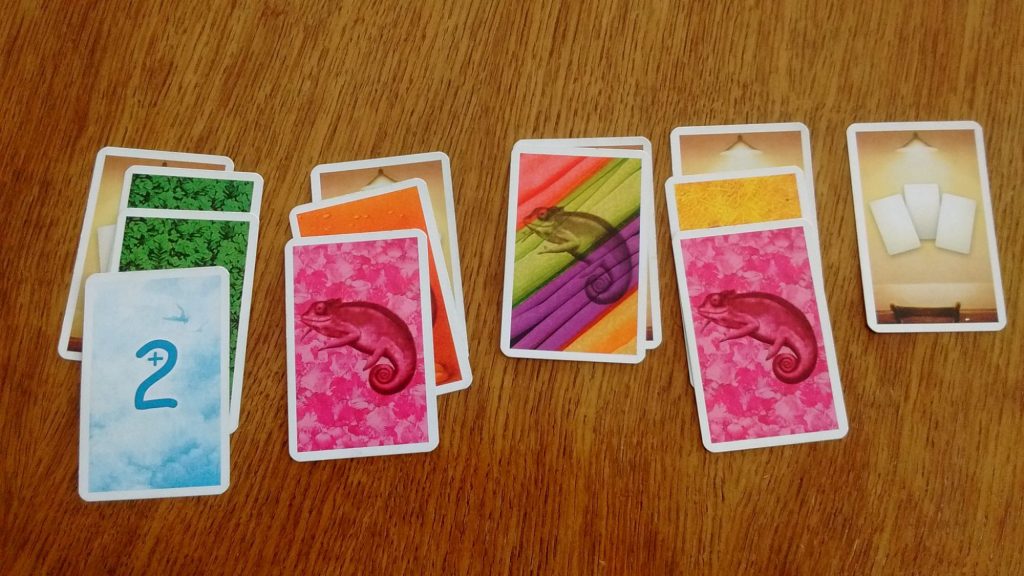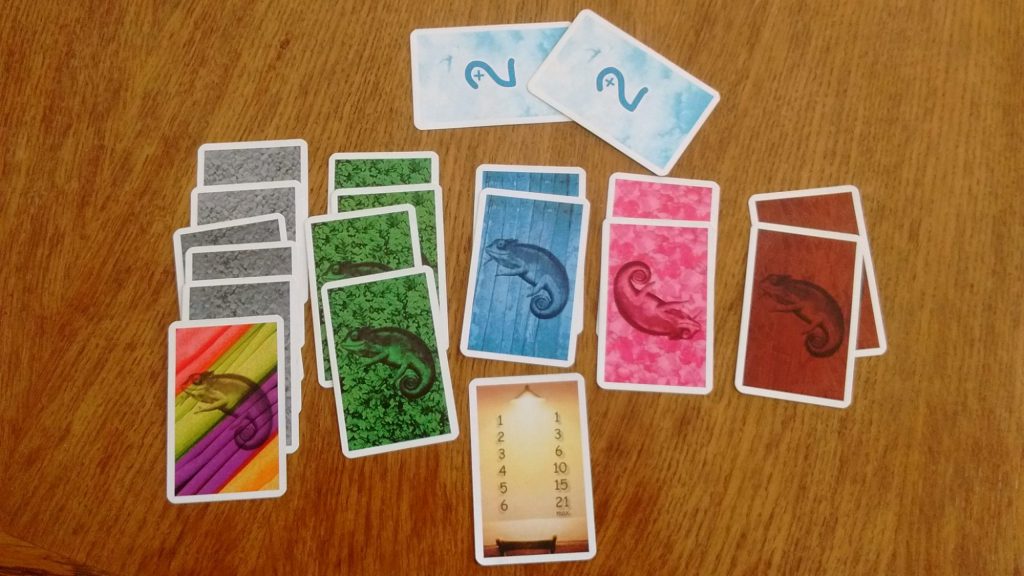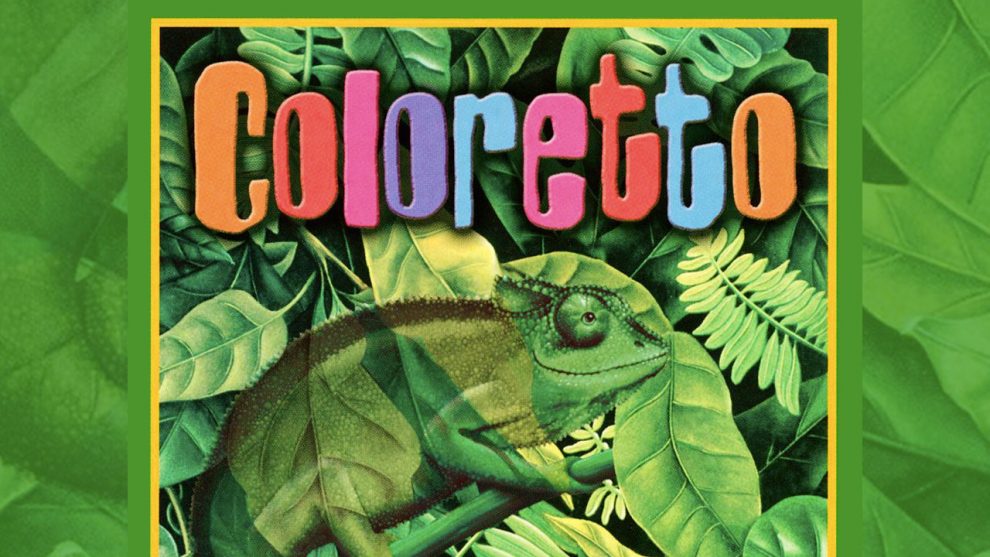It’s elegantly simple. It’s simply elegant. It’s fun, quick, and I’ve yet to find a person who dislikes it. Coloretto contains seven suits, plus three wild cards, ten +2 cards, and some game guides. More importantly, Coloretto is a set collection game where each turn offers you one of two choices:
- Flip the top card of the deck and add it to a placeholder or stack.
- Take one stack of cards and its placeholder.
Setup merely requires lining up one placeholder cards per player. Shuffle the deck of cards, count out 15 from the bottom, insert the “last round” card, and set the remainder of cards on top of it for the draw deck.
Each round, the first player must flip the top card of the draw deck and set it on one of the placeholders. The next player may either flip the next card and add it to any placeholder or stack, or they may collect one stack of cards and its placeholder. No placeholder can hold more than three cards, so if all of the stacks are three cards deep, players must each collect one of the stacks.

The round ends when all of the placeholders are collected. All placeholders are returned to the middle of the table and whoever collected the last stack becomes the first player for the round.
Continue playing rounds until the Last Round card is flipped, then finish that round normally.
Collected cards are laid in front of you so everyone can see who has what. Length becomes strength for the game’s triangular scoring. Here’s the rub: You score points for the three colors for which you have most cards. Every color beyond those three? Score the same points, except those count against you.

For example, your collection of chameleons includes five gray and a wild (+21), four green (+10), two blue (+3), two pink (-3) and two brown (-3). You’ve amassed 28 points. Add two more for each of the two +2 cards you’ve taken, and your final score is 34. If those 18 cards were six each of gray, green, and pink, you’d have a whopping 63 points!
The strategy comes down to a press-your-luck where you want to give yourself the best cards without making them enticing for the other players. If one stack contains three cards of the same color, there’s no chance I’m leaving it there for you to take! Is a wild worth taking by itself? Maybe. If you can outwait the other players, is it worth adding extra cards to your stack? Is it worth risking longer suits of off-colors? Collecting too many colors nets you a negative score, but playing it too safe can limit your high end while others grab the sixth card of a suit. You can’t completely count cards because up to 14 of them won’t be revealed each game.
I’ve yet to find someone who wasn’t intrigued, if not fascinated at how much game fits in so simple a concept. The box has slight modifications for a two-player game, and there are expansions available, but after a hundred games played with dozens of different people, I still enjoy the base set. It’s inexpensive, quick, portable, and most importantly, fun. Get your shuffle on, get it to the table, and enjoy!












Add Comment